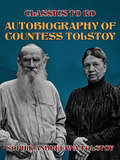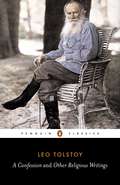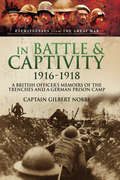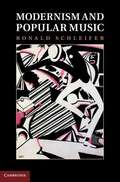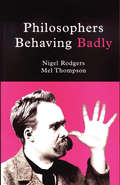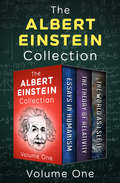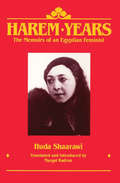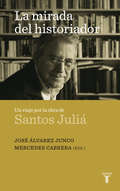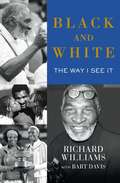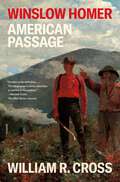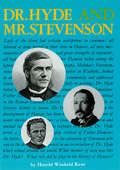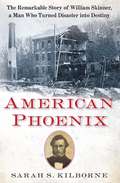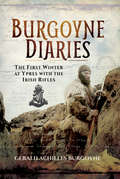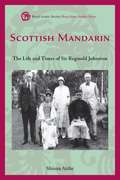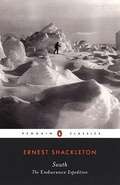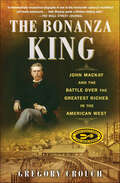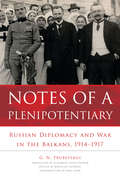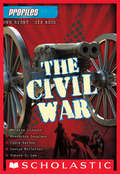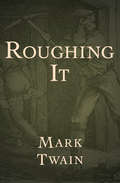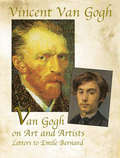- Table View
- List View
Autobiography of Countess Tolstoy (Classics To Go)
by Sophie Andreevna TolstoyThe Autobiography of Countess Sophie Tolstoi was was originally written after it was solicited by a publisher in Russia, S. A. Vegenrov, in 1913. Vegenerov hoped that it might offer insight into the controversy around Leo Tolstoy’s last years in which his radically ascetic ideals interfered in serious ways with his family life and caused what subsequent biographers have described as one of the unhappiest marriages in literary history. However, the autobiography was never published in Sophia Tolstoy's lifetime, and the text itself was discovered among Vegenrov’s papers after his death in 1920. It was subsequently published in Nachala, a Russian review periodical, by Vasilii Spiridonov. The Hogarth Press published the text, brought to them by S. S. Koteliansky, very shortly after the first public appearance of the work in Russia. The short autobiography is framed by a translation of Spiridonov’s fairly extensive preface to the Nachala text, a translators’ preface written by Leonard Woolf and Koteliansky and a number of notes explaining the contextual details around Sophia Tolstoy’s own account of her life and marriage, which were new paratexts for English readers.
A Confession and Other Religious Writings
by Leo TolstoyDescribing Tolstoy's crisis of depression and estrangement from the world, A Confession (1879) is an autobiographical work of exceptional emotional honesty. By the time he was fifty, Tolstoy had already written the novels that would assure him of literary immortality; he had a wife, a large estate and numerous children; he was 'a happy man' and in good health - yet life had lost its meaning. In this poignant confessional fragment, he records a period of his life when he began to turn away from fiction and aesthetics, and to search instead for 'a practical religion not promising future bliss, but giving bliss on earth'.
In Battle & Captivity, 1916-1918: A British Officer's Memoirs of the Trenches and a German Prison Camp (Eyewitnesses from The Great War)
by Captain Gilbert NobbsInitially published in 1917 under the title On the Right of the British Line, this is the first book written by the extraordinary Captain Gilbert Nobbs. Dedicated to his ever loving wife, the harrowing memories and experiences of Nobbs at the Battle of the Somme and after are captured here in a rare account of what proved to be one of the most ultimately futile battles and the agonising aftermath.Following his journey from the fields of the Somme into German custody, In Battle & Captivity 1916-1918 provides an unflinching report of the dramatic losses felt during the horrific Battle of the Somme. However, the book manages to maintain a message of hope that, despite experiencing the barbarity of German captivity, there can still be happiness, as Nobbs proclaimed, 'I do not deplore the loss of my sight, for I can say in all sincerity that I was never happier in my life than I am today.'During the Somme Offensive he led his company in an assault on the German trenches and sustained a shot to the head, which left him permanently blind when the bullet exited through his right eye. Grievously wounded, Nobbs lay undiscovered in a shell-hole as the battle raged round him. After two days he was found and awoke to find himself in a German hospital. Once his wounds had been treated Nobbs was sent to a POW camp where he remained for three months. Fortunately, one month later the truth was discovered, and in December 1916, Nobbs returned to England, where his home, wife and family awaited him. This is the astonishing autobiographical account of Henry Gilbert Nobbs, an extraordinary man of inexhaustible energy whose memoirs will forever provide one of life's enduring monuments to the human spirit.
Modernism and Popular Music
by Ronald SchleiferTraditionally, ideas about twentieth-century 'modernism' - whether focused on literature, music or the visual arts - have made a distinction between 'high' art and the 'popular' arts of best-selling fiction, jazz and other forms of popular music, and commercial art of one form or another. In Modernism and Popular Music, Ronald Schleifer instead shows how the music of George and Ira Gershwin, Cole Porter, Thomas 'Fats' Waller and Billie Holiday can be considered as artistic expressions equal to those of the traditional high art practices in music and literature. Combining detailed attention to the language and aesthetics of popular music with an examination of its early twentieth-century performance and dissemination through the new technologies of the radio and phonograph, Schleifer explores the 'popularity' of popular music in order to reconsider received and seeming self-evident truths about the differences between high art and popular art and, indeed, about twentieth-century modernism altogether.
Philosophers Behaving Badly
by Mel Thompson Nigel RodgersAn engaging and often hilarious survey of the far-from-fusty extra-curricular activities of some of philosophy's finest practitioners Philosophers Behaving Badly examines the lives of eight great philosophers--Rousseau, whose views on education and the social order seem curiously at odds with his own outrageous life; Schopenhauer and Nietzsche, two giants of the 19th century whose words seem ever more relevant today; and five immensely influential philosophers of the 20th century, Russell, Wittgenstein, Heidegger, Sartre, and Foucault.
The Albert Einstein Collection Volume One: Essays in Humanism, The Theory of Relativity, and The World As I See It
by Albert EinsteinThree captivating volumes reveal how Einstein viewed both the physical universe and the everyday world in which he lived. A century after his theory of general relativity shook the foundations of the scientific world, Albert Einstein&’s name is still synonymous with genius. This collection is an introduction to one of the world&’s greatest minds.Essays in Humanism Nuclear proliferation, Zionism, and the global economy are just a few of the insightful and surprisingly prescient topics scientist Albert Einstein discusses in this volume of collected essays from between 1931 and 1950. With a clear voice and a thoughtful perspective on the effects of science, economics, and politics in daily life, Einstein&’s essays provide an intriguing view inside the mind of a genius as he addresses the philosophical challenges presented during the turbulence of the Great Depression, World War II, and the dawn of the Cold War.The Theory of Relativity and Other Essays E=mc2 may be Einstein&’s most well-known contribution to modern science. Now, on the one-hundredth anniversary of the theory of general relativity, discover the thought process behind this famous equation. In this collection of his seven most important essays on physics, Einstein guides his reader through the many layers of scientific theory that formed a starting point for his discoveries. By both supporting and refuting the theories and scientific efforts of his predecessors, he reveals the origins and meaning of such significant topics as physics and reality, the fundamentals of theoretical physics, the common language of science, the laws of science and of ethics, and an elementary derivation of the equivalence of mass and energy. This remarkable collection, authorized by the Albert Einstein archives, allows the non-scientist to understand not only the significance of Einstein&’s masterpiece, but also the brilliant mind behind it.The World As I See It Authorized by the Albert Einstein Archives, this is a fascinating collection of observations about life, religion, nationalism, and a host of personal topics that engaged the intellect of one of the world&’s greatest minds. In the aftermath of World War I, Einstein writes about his hopes for the League of Nations, his feelings as a German citizen about the growing anti-Semitism and nationalism of his country, and his opinions about the current affairs of his day. In addition to these political perspectives, The World As I See It reveals the idealistic, spiritual, and witty side of this great intellectual as he approaches topics including &“Good and Evil,&” &“Religion and Science,&” &“Active Pacifism,&” &“Christianity and Judaism,&” and &“Minorities.&” Including letters, speeches, articles and essays written before 1935, this collection offers a complete portrait of Einstein as a humanitarian and as a human being trying to make sense of the changing world around him.This authorized ebook features new introductions by Neil Berger and an illustrated biography of Albert Einstein, which includes rare photos and never-before-seen documents from the Albert Einstein Archives at the Hebrew University of Jerusalem.
Harem Years: The Memoirs of an Egyptian Feminist
by Margot Badran Huda ShaarawiIn this rare first-hand account of the private world of a Cairo harem during the years before Egypt declared independence in 1922, Shaarawi recalls her childhood and early adult life in the seclusion of an upper-class Egyptian household, including her marriage at age thirteen. Her subsequent separation from her husband gave her time for an extended formal education, as well as an unexpected taste of independence and a critical understanding of the price of confinement. Shaarawi's feminist activism grew along with her involvement in Egypt's nationalist struggle and culminated in 1923 in a daring act of defiance,when she publicly removed her veil in a Cairo railroad station.
La mirada del historiador
by José Álvarez JuncoSantos Juliá ocupa un lugar central en la historiografía española contemporánea. Es autor de varios libros fundamentales, ha animado y coordinado trabajos colectivos y se ha convertido en uno de los historiadores más respetados dentro y fuera de nuestro país. Es un riguroso divulgador, crítico y polemista y, además, un creador de opinión. A lo largo de su carrera ha abordado los grandes temas de nuestra historia contemporánea. Y lo ha hecho de una manera personal y valiente. Un claro ejemplo, en definitiva, de coraje cívico. El resultado es una obra sólida, original e independiente, capaz de abrir nuevos caminos en el ámbito de la investigación y de generar un abundante caudal de reflexiones. En este libro, coordinado por José Álvarez Junco y Mercedes Cabrera y deliberadamente plural, convergen autores procedentes del ámbito de las ciencias sociales, la historia y el periodismo que han realizado un personal homenaje trazando una serie de semblanzas y analizando los temas centrales de la obra de uno de nuestros grandes intelectuales.
Black and White
by Richard WilliamsThe fascinating, revealing, and in-depth memoir of Richard Williams, a self-made businessman, tennis coach, and father to two of the greatest athletes of all time--Venus and Serena Williams.Richard Williams had a grand plan for his daughters long before either of them was born, and he went so far as to write a plan for his family's future. His mind was set on raising two of the greatest women champions in professional tennis. Arguably, he executed his plan with laser-like precision. But the source of his vision and the method behind it have remained relatively unknown--until now. In this inspiring memoir, he reveals the full story of his stubborn determination to beat the odds and fulfill his dreams for his family.Born into poverty in Shreveport, Louisiana in the 1940s, Richard was blessed by a strong, caring mother who remained his lifelong hero, just as he became hero to Venus and Serena later on. From the beginning of his life, Richard's mother taught him to live by the principles of courage, confidence, commitment, faith, and love. He passed the same qualities on to his daughters, who grew to love their father and value the lessons he taught them, contrary to public rumors. "I still feel really close to my father," says Serena. "We have a great relationship. There is an appreciation. There is a closeness because of what we've been through together, and a respect."A self-made man, Richard has walked a long, hard, exciting, and ultimately rewarding road for seventy years, surmounting the many challenges to raise a loving family and two of the greatest tennis players who ever lived. Black and White is the extraordinary story of that journey and the indomitable spirit that made it all possible.
Winslow Homer: American Passage
by William R. CrossThe definitive life of the painter who forged American identity visually, in art and illustration, with an impact comparable to that of Walt Whitman and Mark Twain in poetry and prose—yet whose own story has remained largely untold.In 1860, at the age of twenty-four, Winslow Homer (1836–1910) sold Harper’s Weekly two dozen wood engravings, carved into boxwood blocks and transferred to metal plates to stamp on paper. One was a scene that Homer saw on a visit to Boston, his hometown. His illustration shows a crowd of abolitionists on the brink of eviction from a church; at their front is Frederick Douglass, declaring “the freedom of all mankind.”Homer, born into the Panic of 1837 and raised in the years before the Civil War, came of age in a nation in crisis. He created multivalent visual tales, both quintessentially American and quietly replete with narrative for and about people of all races and ages. Whether using pencil, watercolor, or, most famously, oil, Homer addressed the hopes and fears of his fellow Americans and invited his viewers into stories embedded with universal, timeless questions of purpose and meaning.Like his contemporaries Twain and Whitman, Homer captured the landscape of a rapidly changing country with an artist’s probing insight. His tale is one of America in all its complexity and contradiction, as he evolved and adapted to the restless spirit of invention transforming his world. In Winslow Homer: American Passage, William R. Cross reveals the man behind the art. It is the surprising story of a life led on the front lines of history. In that life, this Everyman made archetypal images of American culture, endowed with a force of moral urgency through which they speak to all people today.Includes Color Images and Maps
Dr. Hyde and Mr. Stevenson
by Harold Winfield KentDr. Hyde and Mr. Stevenson: the life of the Rev. Dr. Charles McEwen Hyde, including a discussion of the open letter of Robert Louis Stevenson.
Dr. Hyde and Mr. Stevenson
by Harold Winfield KentDr. Hyde and Mr. Stevenson: the life of the Rev. Dr. Charles McEwen Hyde, including a discussion of the open letter of Robert Louis Stevenson.
American Phoenix
by Sarah S. KilborneThe incredible story of nineteenth-century millionaire William Skinner, a leading founder of the American silk industry, who lost everything in a devastating flood--and his improbable, inspiring comeback to the pinnacle of the business world In 1845 a young, penniless William Skinner sailed in steerage class on a boat that took him from the slums of London to the United States. Endowed with rare knowledge in the art of dyeing and an uncanny business sense, he acquired work in a fledgling silk mill in Massachusetts, quickly rising to prominence in the nation's new luxury industry. Soon he opened his own factory and began turning out one of the bestselling silk brands in the country. Skinner was lauded as a pioneer in the textile industry and a manufacturer who knew no such word as fail. His business grew to sustain a bustling community filled with men, women, and children, living and working in the mill village of "Skinner-ville," producing the country's most glamorous, fashionable thread. Then, in 1874, disaster struck. Hundreds of millions of gallons of water burst through a nearby dam, destroying everything in its path, including Skinnerville. Within fifteen minutes, Skinner's entire life's work was swept away, and he found himself one of the central figures in the worst industrial disaster the nation had yet known. In this gripping narrative history, Skinner's great-great-granddaughter, Sarah S. Kilborne, tells an inspiring, unforgettable American story--of a town devastated by unimaginable catastrophe; an industry that had no reason to succeed except for the perseverance of a few intrepid entrepreneurs; and a man who had nothing--and everything--to lose as he struggled to rebuild his life a second time. None of Skinner's peers who lost their factories in the Mill River Flood withstood the shock of their losses, but Skinner went on to stage one of the greatest comebacks in the annals of American industry. As a result of his efforts to survive, he became one of the leading silk manufacturers in the world, leaving an indelible imprint on the history of American fashion and style. More striking still, this achievement would never have been possible if Skinner hadn't been ruined by the flood and forced, at age forty-nine, to start all over again, rebuilding everything with just one asset: the knowledge in his head. With masterful skill Kilborne brings to life an era when fabric was fashion, silk was supreme, factories were beacons of American success, and immigrants like Skinner with the secrets of age-old European arts possessed knowledge worth gold to Americans. Here is a story of ambition and desire, resilience and faith, disaster and survival. It is about making it, losing it, and then making it again despite the odds. An enthralling tale, American Phoenix offers a new twist on the American dream, reminding us that just when we thought the dream was over, it may have only just begun. *** FROM AMERICAN PHOENIX As the train slowed in its approach to the depot at the northern end of Skinnerville, one of Skinner's employees, John Ellsworth perhaps, awaited him on the platform. The depot was about a quarter mile from the house along a dark, unlit road. Thus when Skinner stepped down from the car and into the cold night air, he would have found both driver and horse all ready for the short jog home. The trip and this day were almost over, the anniversaries behind him, and a new year in the life of his marriage, his family, and his work was about to begin on the morrow. He was forty-nine years old, and the fabric of his existence had never been stronger. As he walked up the steps to his front door, there in the middle of Skinnerville, with the river flowing reliably behind him, the mill at rest across the way, the houses of his neighbors and employees all around, and a reunion with his wife and children just seconds ahead, there wasn't one clue, nor any sign, that the very next morning nearly everything in his world would be swept away.
The Burgoyne Diaries: The First Winter at Ypres with the Irish Rifles
by Gerald Achilles BurgoyneThese are the diaries of Gerald Achilles Burgoyne, wrote from the trenches just south of Ypres while he was with the Royal Irish Rifles in the Great War.The author's daughter, Claudia Davison, was not even born when these diaries were originally written and was only 12-years-old when her father died in 1936 after being bombed by the Italian Air Force while he and his mules were conveying a Red Cross unit in Ethiopia.Claudia found the diaries in a trunk full of personal effects when her mother died and, after showing them to a long-standing friend who loved the diaries, she sent them off to be published.Despite conditions of all-pervading mud, bitter cold and wind, let alone the bursting shells and the 'sipping' bullet, Burgoyne dispassionately recorded and drew what he saw. These vivid accounts, written on pages of a notebook, were almost daily sent back to his wife. Each day is a gem of interest, from the very first entry in November 1914 to the last in May 1915.The diaries end as abruptly as they begin. In May 1915 Burgoyne was wounded and sent back to England after a gruesome and abortive attack on the notorious Hill 60.Complete with maps and sketches drawn by Burgoyne at the time, this book is essential reading for all Great War enthusiasts and those wishing to learn more about the key conflicts that occurred in 1914 and 1915.
Scottish Mandarin
by Shiona AirlieColonial administrator, writer, explorer, Buddhist, and friend to China's last emperor, Sir Reginald Johnston (1874-1938) was a distinguished sinologist with a tangled love and family life that he kept secret even from his closest friends. Born and educated in Edinburgh, he began his career in the colony of Hong Kong and eventually became Commissioner of the remote British leased territory of Weihai in northern China. He travelled widely and, during a break from colonial service, served as tutor and advisor to Puyi, the deposed emperor. As the only foreigner allowed to work in the Forbidden City, he wrote the classic account of the last days of the Qing Dynasty--Twilight in the Forbidden City'.
South
by Ernest ShackletonExemplary British expedition leader Sir Ernest Shackleton's (1874-1922) compelling account of his 1914 Imperial Trans-Antarctic Expedition consisting of two ships, the HMS Endurance and the HMS Aurora. The goal of the expedition (which it failed to achieve, but not for want of perseverance) was to cross the Antarctic by dogsled, exploring unknown territory and making scientific observations along the way. The plan called for the Endurance, with Shackleton aboard, to establish a base on the shore of the Weddell Sea, while the Aurora did the same at the Ross Sea on the opposite side of the continent. It is a tribute to Shackleton's remarkable energy, his tireless persistence, and his admirable leadership qualities that all members of the Weddell Sea party survived the extraordinary hazards and dangers encountered by the expedition, as did all but three members of the Ross Sea party. Though overshadowed at the time by the outbreak of World War I, the feats of Shackleton and his companions in this expedition are now recognized as ranking among the most memorable in the annals of Antarctic exploration.
The Bonanza King: John Mackay and the Battle over the Greatest Riches in the American West
by Gregory Crouch&“A monumentally researched biography of one of the nineteenth century&’s wealthiest self-made Americans…Well-written and worthwhile&” (The Wall Street Journal) it&’s the rags-to-riches frontier tale of an Irish immigrant who outwits, outworks, and outmaneuvers thousands of rivals to take control of Nevada&’s Comstock Lode.Born in 1831, John W. Mackay was a penniless Irish immigrant who came of age in New York City, went to California during the Gold Rush, and mined without much luck for eight years. When he heard of riches found on the other side of the Sierra Nevada Mountains in 1859, Mackay abandoned his claim and walked a hundred miles to the Comstock Lode in Nevada.Over the course of the next dozen years, Mackay worked his way up from nothing, thwarting the pernicious &“Bank Ring&” monopoly to seize control of the most concentrated cache of precious metals ever found on earth, the legendary &“Big Bonanza,&” a stupendously rich body of gold and silver ore discovered 1,500 feet beneath the streets of Virginia City, the ultimate Old West boomtown. But for the ore to be worth anything it had to be found, claimed, and successfully extracted, each step requiring enormous risk and the creation of an entirely new industry.Now Gregory Crouch tells Mackay&’s amazing story—how he extracted the ore from deep underground and used his vast mining fortune to crush the transatlantic telegraph monopoly of the notorious Jay Gould. &“No one does a better job than Crouch when he explores the subject of mining, and no one does a better job than he when he describes the hardscrabble lives of miners&” (San Francisco Chronicle). Featuring great period photographs and maps, The Bonanza King is a dazzling tour de force, a riveting history of Virginia City, Nevada, the Comstock Lode, and America itself.
Mark Twain's Letters -- Volume 4 (1886-1900)
by Mark TwainAt the beginning of 1870, fresh from the success of The Innocents Abroad, Clemens is on "the long agony" of a lecture tour and planning to settle in Buffalo as editor of the Express. By the end of 1871, he has moved to Hartford and is again on tour, anticipating the publication of Roughing It and the birth of his second child. The intervening letters show Clemens bursting with literary ideas, business schemes, and inventions, and they show him erupting with frustration, anger, and grief, but more often with dazzling humor and surprising self-revelation. In addition to Roughing It, Clemens wrote some enduringly popular short pieces during this period, but he saved some of his best writing for private letters, many of which are published here for the first time.
Notes of a Plenipotentiary: Russian Diplomacy and War in the Balkans, 1914–1917 (NIU Series in Slavic, East European, and Eurasian Studies)
by G. N. TrubetskoiA prince in one of Russia's most exalted noble families, Grigorii N. Trubetskoi was a unique and contradictory figure during World War I. A lifelong civil servant and publicist, he began his diplomatic career in Constantinople, where he served as first secretary of the embassy there for several years. He became one of the leaders of an important political orientation among the liberals that began to express opposition to the tsar, not only on questions of political freedom and domestic political reform, but also by criticizing the tsar's foreign policy on nationalistic grounds. Trubetskoi possessed significant influence over Russian foreign policy and was instrumental in pushing the regime toward an aggressive annexationist stand in the Balkans. When the Russian ambassador to Serbia died suddenly in June of 1914, Trubetskoi was appointed as his replacement—situating him at the center of Russian diplomacy during the decisive period of Russia's entry into the war. His account of this period serves as an important reference for the study of the war's outbreak. Trubetskoi also discusses how he drafted the proclamation on Poland and gives a revealing account of its origins. A valuable source on the major historical problem of the entry of Turkey into the war, the narrative provides interesting details about agreements with Britain and France. Translated by Trubetskoi's granddaughter, Elizabeth Saika-Voivod, and featuring Trubetskoi's original photographs, this fascinating memoir provides an inside look at Russian foreign policies during crucial points of the war. It will appeal to scholars, students, and general readers interested in World War I and Russian history.
Profiles #1: The Civil War (Profiles #1)
by ScholasticFind out how the key players from yesterday and today influenced and interacted with each other during the world's most important moments in this brand new full-color biography series. One event. Six people. It takes more than one person to bring about change and innovation. So much more than just your typical biography, Profiles focuses on six of the most prominent figures during the Civil War. This book includes all of the biographical information kids need to know (background, family, education, accomplishments, etc.) about Abraham Lincoln, George McClellan, Matthew Brady, Clara Barton, Robert E. Lee, and Frederick Douglass. Find out why they were so important to the war and each other. Photographs, maps, and quotes will be interwoven throughout the text.
Roughing It: The Authorized Uniform Edition
by Mark TwainThe Wild West as Mark Twain lived it In 1861, Mark Twain joined his older brother Orion, the newly appointed secretary of the Nevada Territory, on a stagecoach journey from Missouri to Carson City, Nevada. Planning to be gone for three months, Twain spent the next &“six or seven years&” exploring the great American frontier, from the monumental vistas of the Rocky Mountains to the lush landscapes of Hawaii. Along the way, he made and lost a theoretical fortune, danced like a kangaroo in the finest hotels of San Francisco, and came to terms with freezing to death in a snow bank—only to discover, in the light of morning, that he was fifteen steps from a comfortable inn. As a record of the &“variegated vagabondizing&” that characterized his early years—before he became a national treasure—Roughing It is an indispensable chapter in the biography of Mark Twain. It is also, a century and a half after it was first published, both a fascinating history of the American West and a laugh-out-loud good time. This ebook has been professionally proofread to ensure accuracy and readability on all devices.
Van Gogh on Art and Artists: Letters to Emile Bernard
by Vincent Van GoghThese letters, written from 1887 to 1889, are among the most important and relevant sources of insight into van Gogh's life and art. 23 missives, accompanied by reproductions of a number of his major paintings and facsimiles from his letters, radiate their author's impulsiveness, intensity, and mysticism. Chronology. Select Bibliography. Index. 32 full-page black-and-white illustrations.
